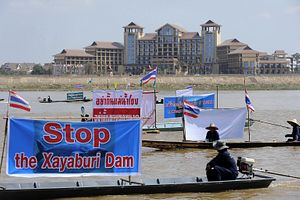The Mekong has long cast a mystical spell over adventurers, wildlife experts, and scientists enchanted by its spectacular rapids and waterfalls, along with its endangered dolphins, giant manta rays, and Siamese crocodiles. The river’s biodiversity is second only to the Amazon.
In recent years, however, this great international river – which flows through six countries – has increasingly grabbed the attention of engineers, technocrats, and energy consultants on a very different kind of mission: to exploit its roaring currents in pursuit of hydropower.
Any idea of environmental protection for the wonders of the Mekong has been marginalized by China’s grand Belt and Road Initiative (BRI) with its focus firmly fixed on trade, infrastructure development, and, along the Mekong, dam construction.
On the banks of the Mekong in Chiang Khong, in northern Thailand, local resident and teacher Niwat Roykaew explains the importance of the river. “The Mekong is very special for the people,” he says. “Our community understands what’s important for life: water, forests, soil, and culture.”
He sees the soul of the river as a precious part of the country’s cultural heritage, something that should transcend financial interests. “Many governments only think about the economy,” he says. “[They think] nothing about nature and culture.”
But China has a very different perspective on the Mekong (known as the Lancang in Chinese) as it attempts to fast-track development in the region.
Is strong regional momentum toward greater integration with the Chinese economy destined for smooth sailing along the Mekong, sweeping all local obstacles and objections out of its path?

































